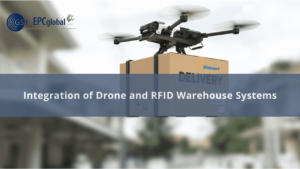
5 types of RFID read range you should know
RFID, short for radio-frequency identification, uses electromagnetic frequencies to communicate between RFID readers and RFID tags. RFID readers, transmit signals to read and write data on RFID tags. There are both active and passive tags. Active tags utilize batteries to boost their power output.
There are five major frequency ranges that RFID systems operate at. RFID comes in many different forms. It works at different frequencies, in different applications, and with different characteristics.
The physical tag read range is determined by the individual RFID reader and antenna power, the material and thickness of material the tag is coated or covered with, the type of antenna the tag uses, the material the tag is attached to and more!
While a specification may show a theoretical RFID tag read range of 5 meters (ideal conditions) it may be as little as 1 meter if the tag is attached to an object that is sitting on a metal surface surrounded by water and electromagnetic waves (not ideal conditions)!
Frequency Specific Details
- 125 kHz. and 134.2kHz. Low-Frequency (LF) Passive RFID Tags – usually 5-10 cm, use a high-powered RFID reader which can have a read range of up to 80cm.
- 13.56 MHz. High-Frequency (HF) Passive RFID Tags – maximum read range of 1 meter – usually under 10 cm. In the 13.56 MHz band, there are two main standards, ISO14443 and ISO15693, ISO14443 identification close but low-price confidentiality, often as a public transport card, access card to use. ISO15693’s greatest advantage is its recognition efficiency, through a high-power reader to identify the distance can be extended to more than 1.5 meters, because of the good wavelength penetration in dealing with dense label when superior to ultra-high-frequency reading effect.
The maximum reading distance of ISO / IEC 14443 is 10cm.
The maximum reading distance of ISO / IEC 15693 is 1m.
- 433 MHz Ultra High Frequency Active RFID Tags – up to 500 meter read range.
- 860 ~ 960 MHz. Ultra High Frequency (UHF) Passive RFID Tags – maximum read distance of 15 meters – an average distance of 5 meters. A passive ultrahigh-frequency (UHF) handheld reader has a range of about 3 meters with a high-performance reader model and high antenna gain. The read distance of RFID mainly depends on the reader power (module performance), antenna size (antenna gain), tag size, and working environment.
- 45 GHz. Super High Frequency Active RFID Tags – up to 100 meter read range. There are several different modulations for 2.45 GHz. and you can also have real time location information from these active tags.
FREQUENCY | RANGE | APPLICATIONS |
Low-frequency 125 – 134.2 kHz | up to 80mm | Pet and ranch animal identification; car keylocks; factory data collection |
High-frequency 13.56 MHz | up to 1 meter | Library book identification; smart cards; NFC; transit tickets |
Ultra-high frequency (UHF) 433 MHz | up to 100 meters (with active tags) | Container identification with active tags |
Ultra-high frequency (UHF) 860 – 930 MHz | up to 15 meters | Supply chain tracking: item identification; apparel; healthcare; |
Microwave: 2.45 – 5.8 GHz | up to 100 meters | Highway toll collection; vehicle fleet identification |





